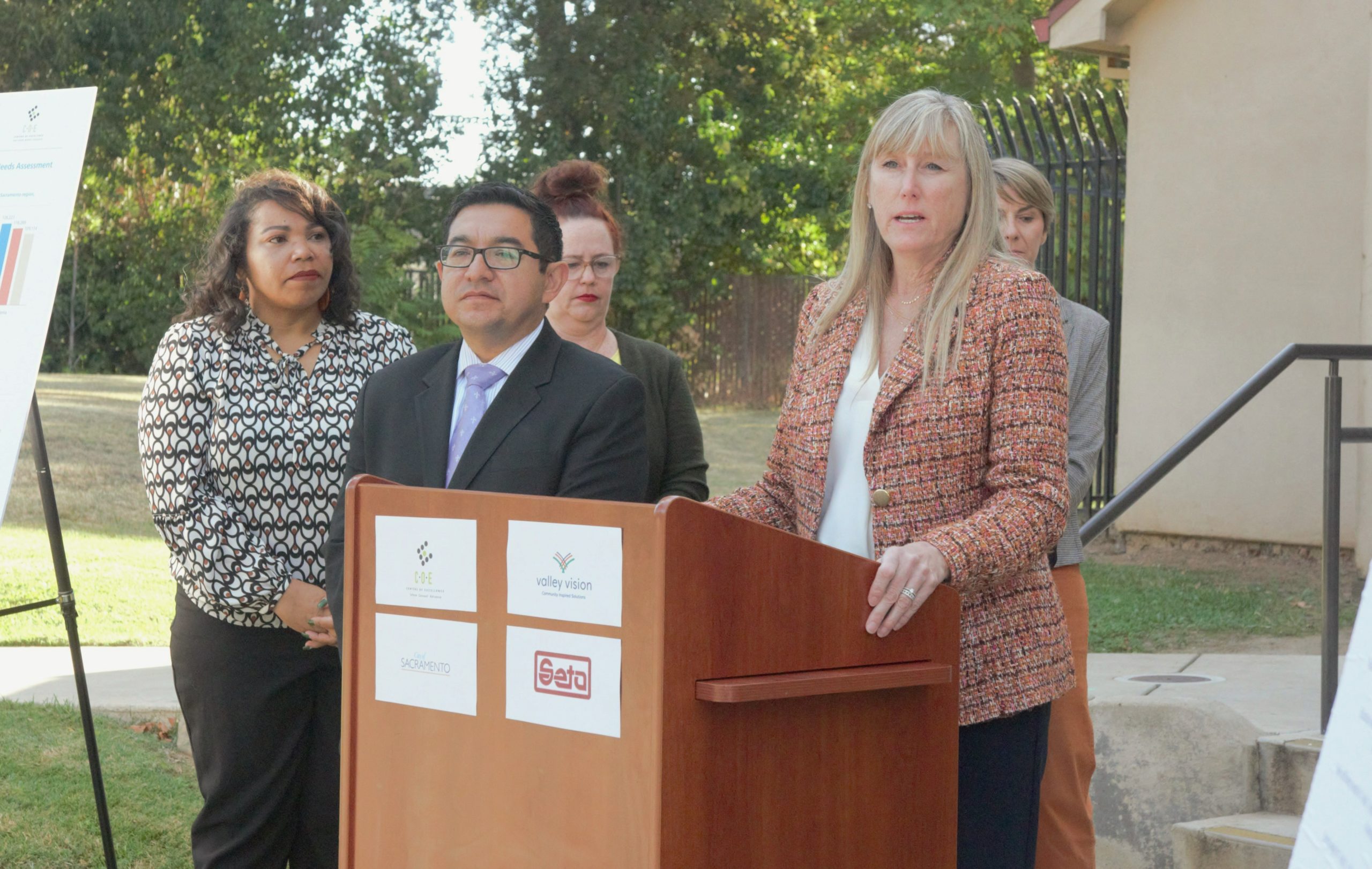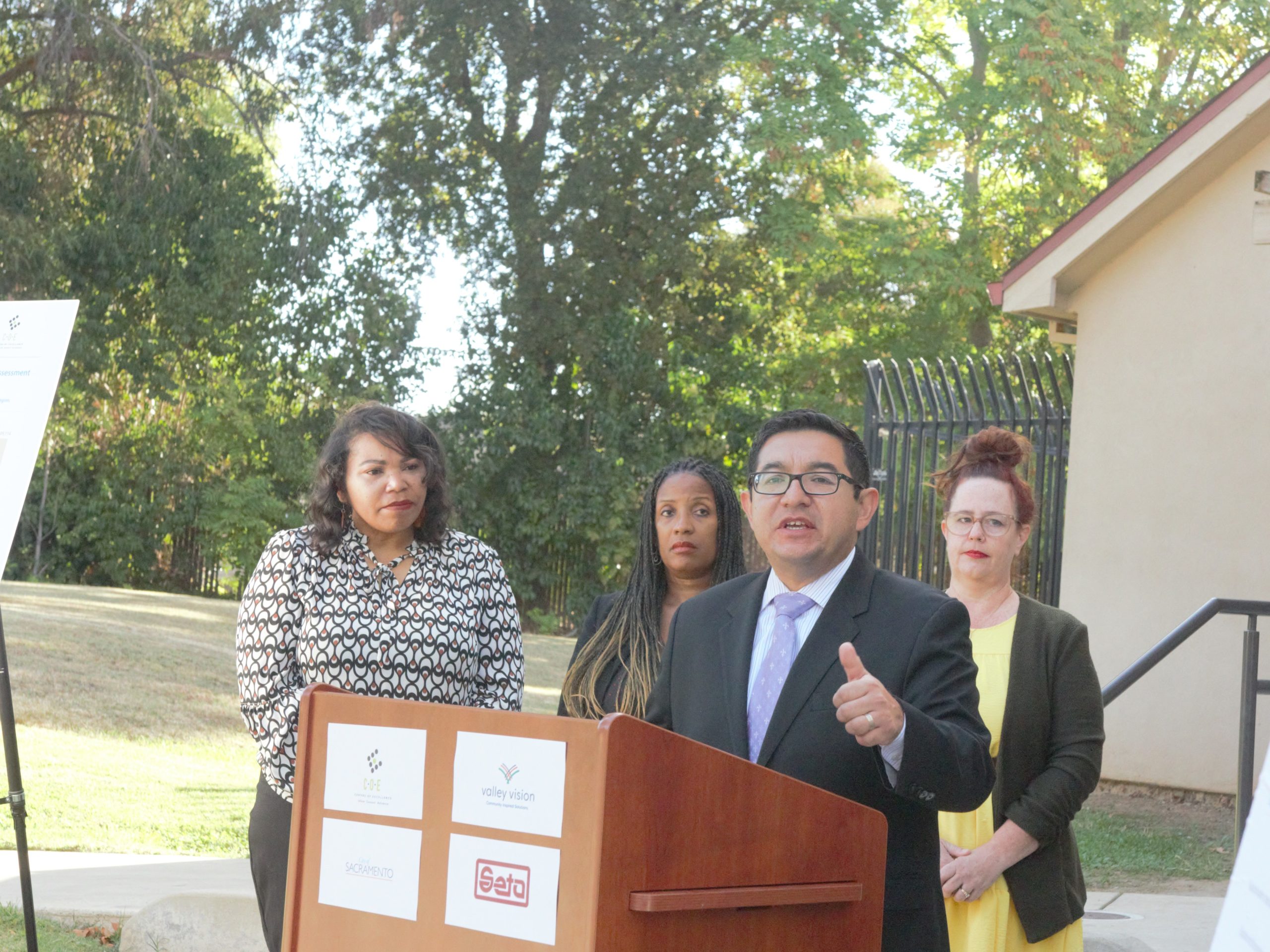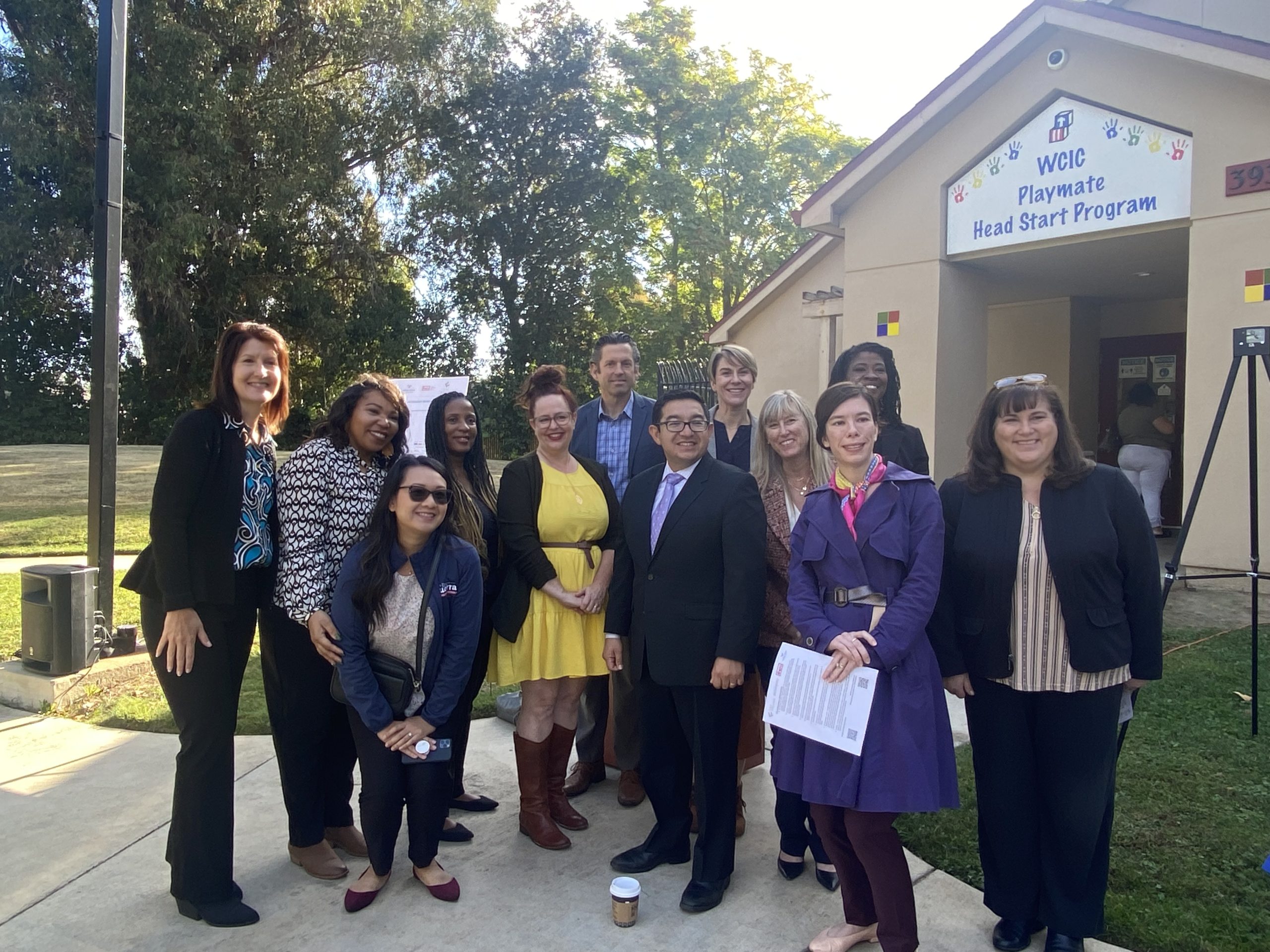Shortages in Early Childhood Education
New report underscores employment solutions to improve job quality and working conditions
Sacramento, CA – October 26, 2022: Valley Vision and the Greater Sacramento region Center of Excellence released an Early Childhood Education (ECE) Workforce Needs Assessment report detailing capacity and workforce challenges facing the Greater Sacramento Region. This report builds upon the work of the Early Learning and Child Care Taskforce which was created at the direction of Mayor Pro Tem and Chair of the Sacramento Employment and Training Agency Eric Guerra, to develop recommendations to improve access to affordable and quality child care and increase access to career pathways in early childhood education and child care.
The report details a chronic workforce shortage with child care licensed capacity unable to keep up with demand. In Sacramento County, the number of licensed spaces only accounts for one out of every three children aged 0 to 5 years old. A large majority of licensed spaces (88.5% of total capacity) in child care centers in Sacramento County are for preschool-age children, with only 11.5% designated for infants. In addition, the impact of Transitional Kindergarten (TK) will play a significant role in exacerbating the early child care education workforce shortage by increasing overall demand, and creating a need to backfill positions from the existing workforce who may fill these positions.
Denise Lee, Interim Executive Director of the Sacramento Employment and Training Agency (SETA) that administers Head Start for Sacramento County shares: “The challenges outlined in this report are on point with what child care employers, like Head Start, are facing each day. The significant staffing shortages continue to hinder child care providers’ ability to expand service locations to meet demand; to lengthen operational hours for working families; and/or to keep centers/classrooms open on a daily basis so families are not scrambling with little notice. The crisis is real. However, so are the solutions. What is most valuable about this report is a set of recommendations that are actionable by key stakeholders in our community, including SETA.”

Child care workers and preschool teachers make well below a living wage in the Greater Sacramento Region. Currently the living wage for a one adult and one child household in the region is $37.27. The report found that child care workers in Sacramento County make one third of the living wage with a median wage of $13.74. It identified that preschool teachers’ make less than half of the living wage, with median hourly earnings of $16.68.
Mayor Pro Tem Guerra emphasizes, “Parents are struggling to find child care, year long waitlists prevent parents from returning to the workforce. At the core of our child care crisis is a shortage of early learning and child care workers, we must invest in child care workforce pipelines to ensure we have enough child care workers to meet the child care demands of our ever changing economic climate and needs of our families.”
Concurrent with results from Valley Vision’s recent Livability Poll, CEO Evan Schmidt explains, “Low wages continue to be a top concern of residents and impact the ability to afford basic needs, such as food and housing. Industries with chronic low wages are particularly concerning, especially when dominated by women workers of color who have historically seen significant wage gaps.”

The report also found inequities in demographic representation across the ECE workforce, with 70% of child care workers and teachers coming from non-white backgrounds, predominantly Latina. Nonwhite groups were underrepresented in supervisory positions within the industry (40%). Additionally, 80% of the family child care home workforce and 52% of center teachers are age 40 and older, making retirements a concerning threat and strategies to attract younger workers more important.
The report sets forth recommendations to address our region’s critical early childhood education workforce shortage. “High quality early childhood education is a crucial support for young children, yet this report shows how we are not meeting the needs of our region. The report, through its findings and recommendations, makes clear that we need to both address job quality and working conditions alongside expanding educational pathways and professional development for child care workers,” shared Kevin Ferreira van Leer, Associate Professor of Child and Adolescent Development at Sac State.
Valley Vision is hosting a virtual conversation that will include a deeper dive into this topic on December 6th from 12:30 – 2:00 PM. This event will include a presentation of key findings and recommendations from the recently released report and a panel discussion to including representatives from Head Start, Sacramento County Office of Education, City of Sacramento, Sacramento State’s College of Education, and others.
###
Media Contact: Priya Kumar priya.kumar@valleyvision.org (707) 386-8501
About the Report: The City of Sacramento and the Sacramento Employment and Training Agency (SETA) convened the Early Learning and Child Care Task Force to coordinate efforts and address issues in the ECE industry. A working group within the task force commissioned the Center of Excellence for the Greater Sacramento region and Valley Vision to undertake a study that illuminates major issues facing the early childhood education workforce in Sacramento County and the Sacramento region. The report complements data and recommendations provided by the 2017 Sacramento County Board of Education Early Learning Road Map, and the 2019 City of Sacramento Strategic Plan to Increase Access to child care and Early Learning.
About Valley Vision: For more than 25 years Valley Vision has used research to help governments, businesses, foundations and community groups better understand the issues facing our region. We believe that knowing and understanding the facts is the best way to establish a common working foundation for collaborative problem-solving. To that end, Valley Vision conducts, produces and interprets research including scientific public opinion polls, focus groups, community needs assessments, best practice studies and other research tools to bring to light the information local leaders need to improve our communities.
About Centers of Excellence: The Centers of Excellence (COE) for Labor Market Research deliver regional workforce research and technical expertise to California community colleges for program decision making and resource development. The Centers of Excellence Initiative is funded in part by the Chancellor’s Office, California Community Colleges, Economic and Workforce Development Program. The Centers aspire to be the leading source of regional workforce information and insight for California community colleges.

Valley Vision Continues to Support a Food System For All
In recent months, the COVID-19 pandemic has created extraordinary challenges for our food system as food and economic insecurity has sky-rocketed. In recent days our country and our community have experienced significant pain and grief over the manifestations of systemic racial, economic, and social injustice. As our region joins together to face the challenges of COVID-19, we also strive for a food system that works for all, as a vital part of equitable, inclusive, healthy communities.
There has long been a connection between food access and economic, social, and racial justice sought by black and brown communities. In fact, in 1968, one of the earliest and most successful actions of the Black Panthers movement was the creation of the Free Breakfast for Children Program.
The program was so impactful that, during a 1969 U.S. Senate hearing, National School Lunch Program Administrator Rodney Leonard admitted that the Panthers probably fed more poor school children than the State of California. However, FBI Director J. Edgar Hoover vehemently disapproved of the Black Panthers and worked adamantly to squash the movement. He branded the Breakfast Program not just a “tactic” but a “threat” and authorized raids and destruction of any churches or community centers that were participating. By the early 1970s, the Black Panthers Breakfast Program ended. However, due to their efforts, Congress could not ignore the program’s critical role in the lives of students and their families, and in 1975 established The School Breakfast Program. Since then, funding has dramatically increased for both the National School Lunch Program, as well as the School Breakfast Program – the legacy of the Black Panthers. In 2019, over 100,000 schools received funding to serve over 33 million students breakfast and lunch at free or reduced prices. For many, school-provided meals remain these students’ primary source of nutrition.

Valley Vision has always been committed to securing an equitable food system in our region. In 2015, along with the Sacramento Region Community Foundation, published the Food System Action Plan. The report, developed in partnership with numerous leaders and community stakeholders, assessed the status or the entire region’s food system and gave specific actionable policy recommendations and strategies to strive for a sustainable and equitable food system. While investigating the status of programs targeting food equity and food accessibility, Valley Vision discovered that in the Sacramento Region only 71% of the 205,000 students eligible for the National School Lunch Program were participating, and an even smaller percentage of those eligible were enrolled for the School Breakfast Program. The same statistics were also true for families eligible for CalFresh and SNAP programs. The impact, aside from a growing number of food-insecure residents, was an estimated loss of $215 million in potential revenue for the region from farmers and distributors supplying fresh and nutritious foods to the community.In May 2020 Valley Vision, along with Greater Sacramento Economic Council (GSEC), Sacramento Metro Chamber, Sacramento Asian Chamber, and the Sacramento Area Council of Governments (SACOG), co-published the region’s new prosperity strategy along with Our Path Forward: The Prosperity Strategy, a bridge to economic recovery.
The framework bolsters the Greater Sacramento region’s food and agriculture cluster, a deep supply chain that extends from research to commercialization of technology, to production, processing, distribution, and consumption. The report recognizes the vital importance of our food and ag economy and the imperative for a sustainable and equitable food system.
Guided by the Food System Action Plan and our projects over the years – and with the new imperative of dealing with the crisis created by COVID 19 – especially with the dramatic increase in hunger and food insecurity and the impact on our farmers, food distributors and restaurants in particular – Valley Vision will continue to advocate for and drive efforts that invest in our regional food system. We are working with partners at the local, state and federal levels on strategies to increase institutional procurement of locally grown foods by schools, hospitals, and others; support school wellness and student nutrition policies; expand food and beverage manufacturing, including healthy new foods of the future and workforce pipelines; drive food and ag innovation and entrepreneurship; accelerate rural broadband initiatives to support AgTech and rural communities; and strengthen the nonprofit sector, especially in areas of food access and literacy.
With the Food System Action Plan at a five-year benchmark, we hope to update the key facts on food security and access that were identified in 2015, and work with the Community Foundation, stakeholders and the community to update and act upon the Food System Action Plan’s strategies and recommendations.
If you are interested in learning more about Valley Vision’s involvement in the Food and Ag space please contact Emma Koefoed at Emma.Koefoed@valleyvision.org.
